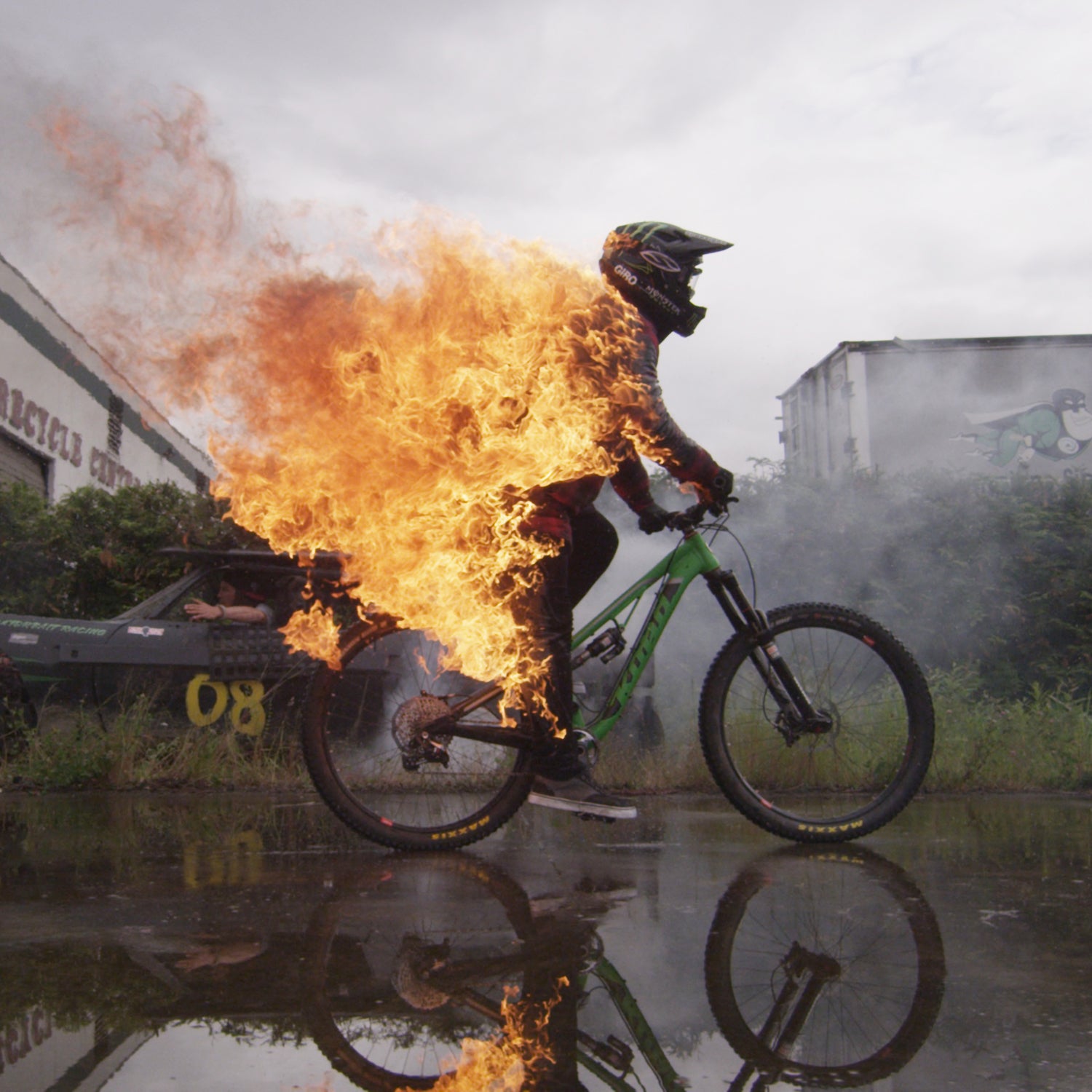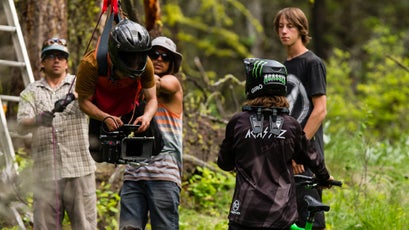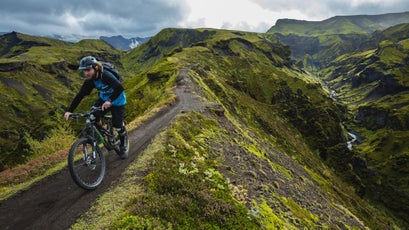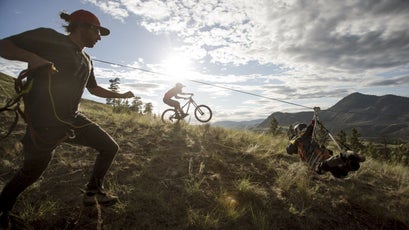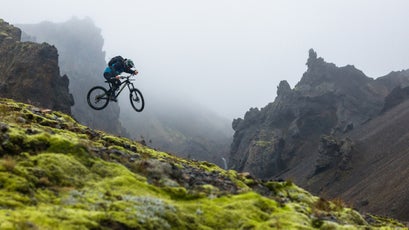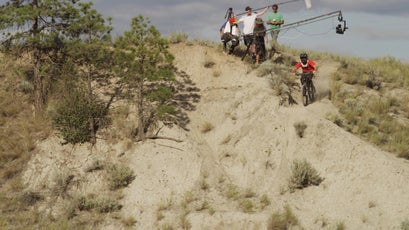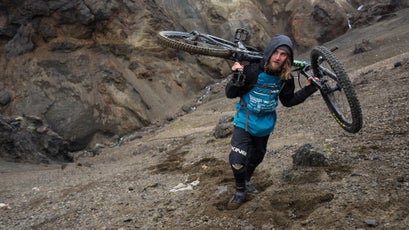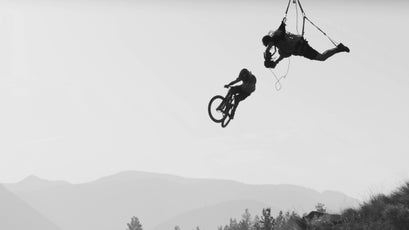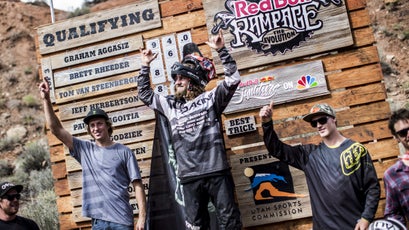It was a routine ride for mountain biker Graham Agassiz. He’d done it 100 times. It was 2013, in British Columbia, when the then 23-year-old pro free-rider charged down a steep, scrubby single track that would change the trajectory of his career.
He clipped a sagebrush plant and suddenly tomahawked off his bike. He landed hard on the ground, face-first, rolled over and remained still, struggling to catch his breath. His lung had collapsed, and his neck was broken.
The freak accident could have been a career ender—or worse. Instead it marked the start of a battle in which Agassiz would need to do more than fix his body to return to the top of the sport. He’d have to reconsider his lifestyle. The spirit of his four-month recovery is depicted in , a narrative-documentary concept film from Sherpas Cinema that launched . With riveting, surrealist visuals, the film aims to convey a total reconstruction of self. “I feel like I was given a second chance,” Agassiz said in an email, “which just added fuel to the already burning blaze inside of me.”
Agassiz grew up in Kamloops, British Columbia, considered the birthplace of free-ride mountain biking. He follows an incredible lineage of mountain bikers the city produced and has been hailed as the latest great rider from the area. He started racing BMX at 7 years old, mountain biking at 14, and went pro at 18. Two years ago, just months before his injury, Agassiz wowed his fellow competitors at the . By all accounts, Agassiz is an amazing athlete, says Eric Crosland, film director and a co-founder of Sherpas Cinema. “He's a style master.”
But skyrocketing to stardom in extreme sports can lead to extreme lifestyle choices. Before the broken neck, Agassiz had fallen into a world of partying and drinking.* Coming back wouldn’t just mean healing physically, it would mean coming to terms with the temptations and distractions—demons, as they're called them in the film—that haunted the rider during the early years of his career.
“It’s what a lot of young riders in action sports struggle with,” Crosland says. “There is this sort of rock star status that comes along with these young pro athletes. It’s not a conventional sports system,” like in pro football or baseball, for example. “There’s such a huge lifestyle component.”
That kind of narrative is what drew the interest of Sherpas, Crosland says. It’s deeper than the “athlete recovers from injury” narrative. “I want to grow the culture of the sport, so I found it very natural to explore the things based around the sport that’s not just the riding.”
To capture Agassiz’s metamorphosis, Sherpas splices together dreamlike shots of temptation personified with intense free-riding scenes filmed in surreal landscapes in Iceland. In one example, we see Agassiz reclining in steaming hot springs while a trio of naked women feeds him candy, then suddenly we're in the middle of a shaky sequence of the man tearing through black volcanic sand on his bike. A long, slow-motion shot of Agassiz cycling across a wet cement drive, his body on fire, is similarly striking.
“We’re always looking for excuses to draw in crazy visuals,” Crosland says. “We want to create a mood where you’re watching it and where you get sucked in and taken to another place.”
The otherworldly landscapes of Iceland presented the perfect setting, Crosland says, in part because no professional studios have successfully filmed mountain biking there. Shooting on the island was wet, sometimes miserable, and logistically challenging. Agassiz and the filmmakers were dropped by helicopter into the country's interior and simply hiked and biked from one location to the next, camping in the open. It was Sherpas’ way to set the film's imagery apart from the conventional Utah scenery most mountain bike films feature, Crosland says. The unearthly setting, along with Agassiz's fast, aggressive riding style, blurs the boundaries of what is real and supernatural.
They filmed using a combination of aerial vehicles—drones and helicopters—and analog cable camming. That’s where a cameraman, strung on a cable between trees, glides along the line, tracking Agassiz as he rides. The jostling camerawork puts you alongside Agassiz and gives viewers a sense of being on the bike, Crosland says.
The result is a fragmented story of rebirth and redemption. It was four months after his neck injury before Agassiz got back on the bike, and the accident changed him, he said. He returned to riding more determined than ever. (He again qualified for the Rampage in 2014, but tore his MCL before the final event.) Coming back from an injury is not just about getting your strength back, it’s about finding your confidence, Agassiz said. “In your mind you know you can ride a certain way, but convincing yourself to do so is a battle. I needed to get back on track and I did, digging deep inside and looking at the big picture.”
*An earlier version of this story inadvertently implied that Agassiz was involved with drugs before his accident. That implication has been removed.


